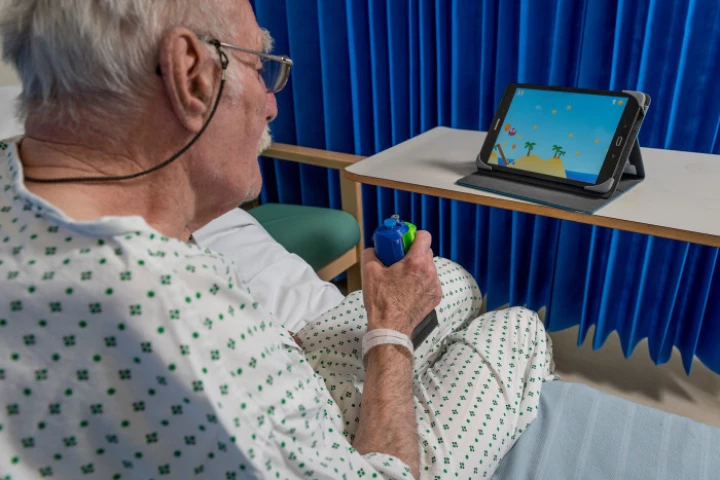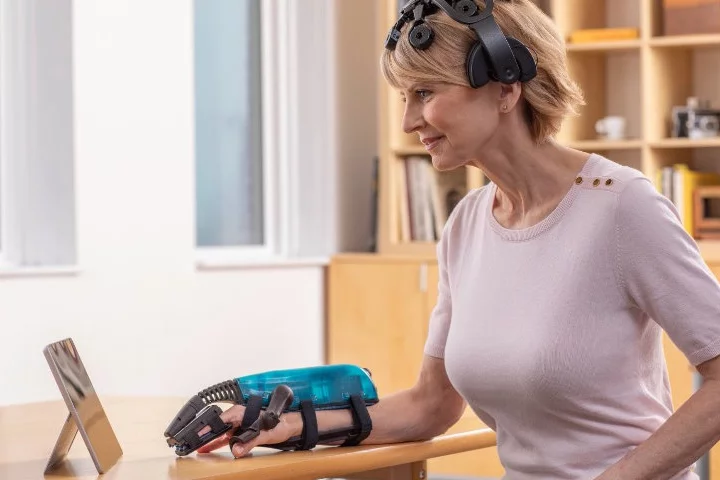Rehabilitation
-
An experimental new material could help rehabilitate the injured and allow the nonspeaking to "speak," among other potential uses. It's also highly elastic, electrically conductive and self-healing – and it's known as CareGum.
-
When someone has suffered arm weakness due to a stroke, it's important for them to perform repetitive exercises in order to regain strength in the limb. A new device is designed to help them do so, as they use the gadget to play video games.
-
When someone has suffered a stroke, they often have difficulty relaying commands from their brain to other parts of their body, such as their limbs. A new robotic system, known as NCyborg, may one day help them regain the ability to do so.
-
A novel device designed to help stroke patients recover wrist and hand function has been approved by the US Food and Drug Administration. Called IpsiHand, the system is the first brain-computer interface device to ever receive FDA market approval.
-
When a stroke victim has lost the use of an arm, they typically have to perform rehabilitative exercises utilizing heavy, costly, clinic-based equipment. A compact new portable device, however, could be used by patients in their own homes.
-
According to a new study, the rolling iStride Device has been shown to improve the gait of stroke victims.
-
A new augmented reality-based system is made to train athletes and help rehab patients, by providing real-time motion feedback.
-
If someone is recovering from an injury that reduces their mobility, it's not uncommon for them to walk with a cane throughout the day, and to periodically get their progress checked by a rehabilitative therapist. A new "smart" cane, however, could allow them to do both things at once.
-
Although exercise is the best way of building muscle, there are cases where people need some help – such people can include those who are frail, or are laid up by injuries. That's where a new prototype device comes in, that uses magnetic fields to "fool" muscles into thinking they're being used.
-
When it comes to upper-limb rehabilitation, it's helpful for patients to replicate tasks in which they pick up and precisely place objects. According to scientists from Ben-Gurion University of the Negev, a good way of motivating patients to do that is to have them play tic tac toe against a robot.
-
For people with lower limb problems, making regular trips into a physiotherapy clinic can be a major hassle if they live in a remote region. That's why Deepti Aggarwal, a PhD candidate at Australia's University of Melbourne, created the internet-connected SoPhy "smart socks."
-
We've seen all sorts of innovations to help rehabilitate stroke patients, from Nintendo Wii games to stem cell treatments. Now, a team of researchers has come up with a band-aid-like sensor, worn on the throat, which tracks vital information to send wirelessly to a doctor.
Load More











